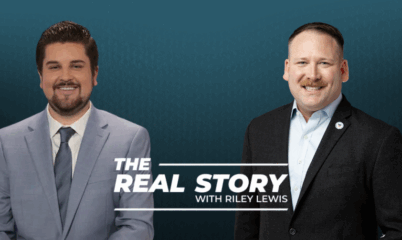
Why is the VA MISSION Act so important? Because the VA isn’t fixed yet
Has the Department of Veterans Affairs come a long way toward providing better care for veterans? Absolutely.
But that doesn’t mean serious problems don’t persist.
The VA is still not reliably tracking veterans’ wait times, according to the Government Accountability Office (GAO). This assessment comes five years after the Phoenix VA scandal erupted, informing the public that the department was manipulating wait times for medical appointments.
In a hearing with the House Veterans’ Affairs Committee, GAO official Debra Draper told lawmakers that “long wait times and weaknesses in the scheduling system have remained persistent and have hindered veterans’ ability to access care.”
Vets are still waiting for care
The GAO found it can take as long as three months for a veteran to be enrolled in VA health care benefits. Tracking and scheduling often show an incomplete picture of wait times, meaning veterans wait longer with no consequence for the VA.
For example, the GAO found the VA calculates the amount of time between a requested appointment date and the first available appointment as a wait time. However, there are often days, or even weeks, before that requested appointment that a veteran is waiting for the VA to determine benefits eligibility and begin the scheduling process.
So the VA wait time of just a few days between a requested appointment and a schedule appointment isn’t always entirely accurate.
But poor scheduling and tracking practices also affect those seeking care from non-VA providers.
The GAO report also found that when the VA examines wait times for community care, it tracks only a portion of the process, not accounting for records assessment and referral processes. The actual amount of time a veteran is waiting is misrepresented. When all parts of the of the scheduling and referral process are accounted for, a veteran could wait as much as 70 days to see a community care provider.
That 70 days is a long way off from the VA’s goal of a 30-day maximum wait for non-VA care.
Better policies mean more transparency
But it’s not all bad news.
The GAO’s results preceded implementation of the VA MISSION Act. Pieces of that law will go a long way toward helping alleviate some of the VA’s problems.
The VA MISSION Act required consolidation of the VA’s multiple community care programs into one cohesive program. That will eliminate a lot of confusion, ensuring veterans can get care more quickly.
Ongoing efforts to modernize the VA’s electronic health records system and information technology will also streamline the scheduling and coordinating process.
The VA is on a path to providing better care. But Congress, watchdogs and veterans need to continue keeping the VA accountable to meeting deadlines and putting veteran care first.
Do you support more health care options for veterans? Let your lawmaker know!




